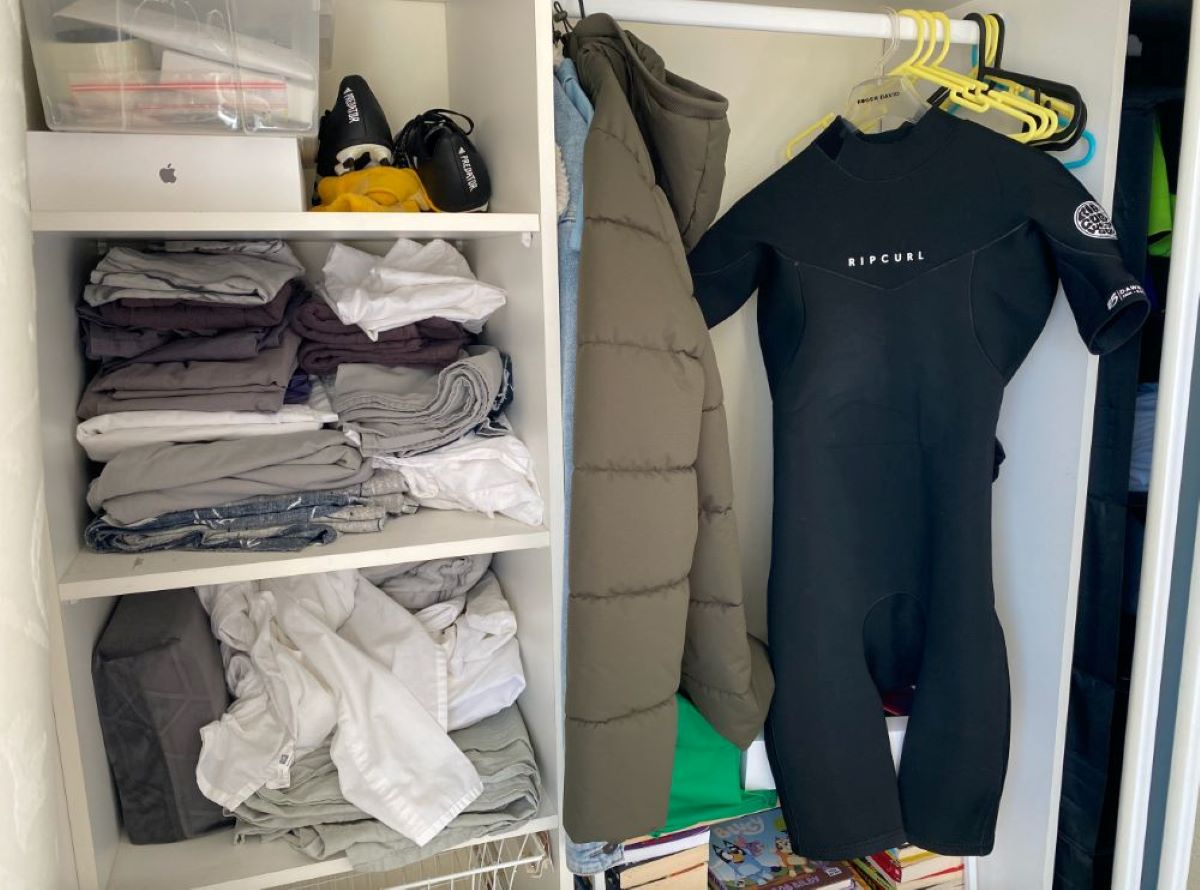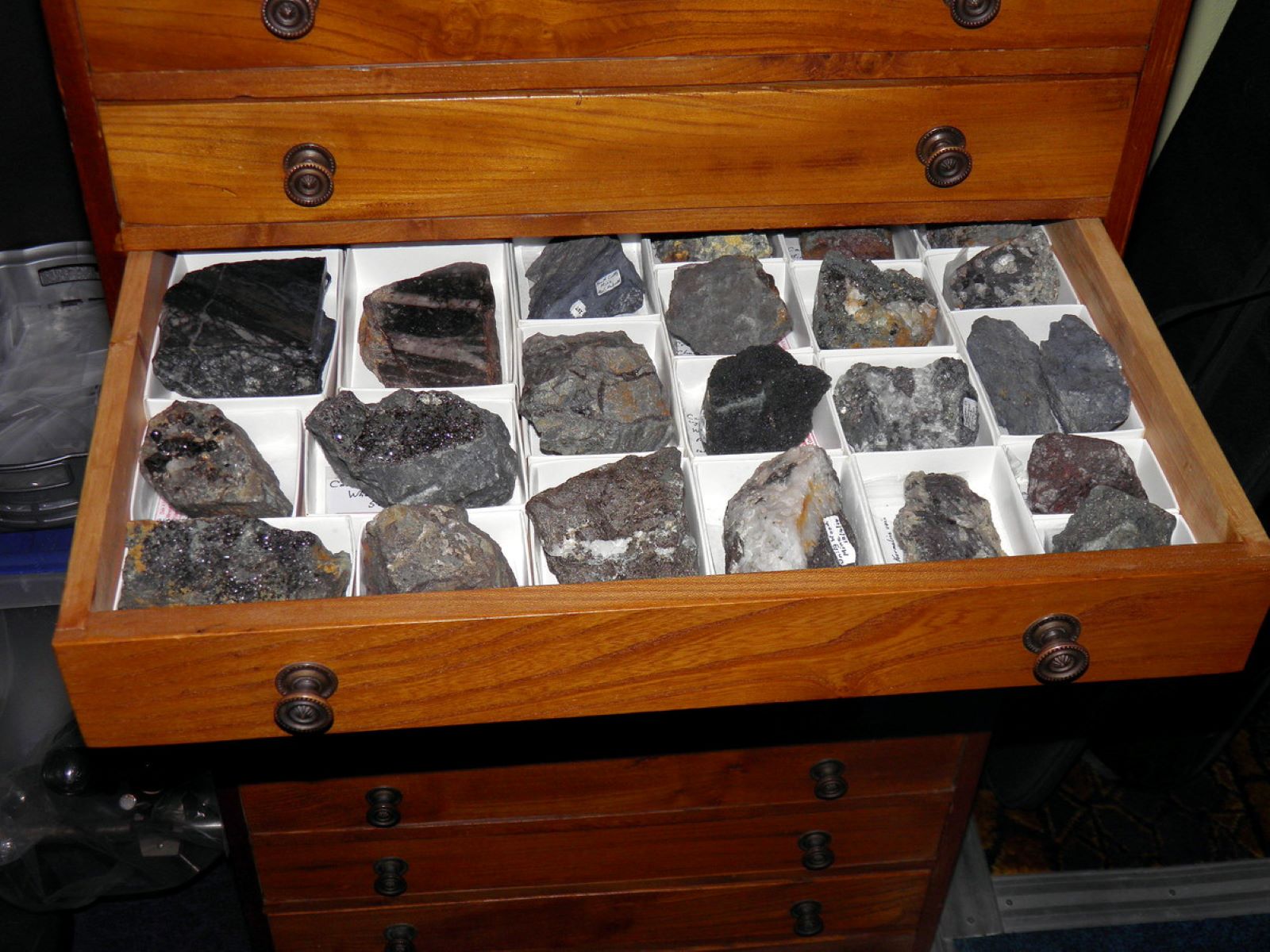

Articles
How To Store A Wetsuit
Modified: August 17, 2024
Learn the best methods for storing your wetsuit to prolong its lifespan and prevent damage. Read our informative articles for expert tips and advice.
(Many of the links in this article redirect to a specific reviewed product. Your purchase of these products through affiliate links helps to generate commission for Storables.com, at no extra cost. Learn more)
Introduction
A wetsuit is an essential piece of gear for anyone involved in water sports or activities such as surfing, diving, or swimming. It provides insulation and protection against cold water, ensuring that you stay comfortable and safe in the water. However, properly storing a wetsuit is just as important as using it correctly. A well-maintained wetsuit will last longer and perform better, saving you from the inconvenience and expense of needing to replace it frequently.
In this article, we will guide you through the steps to store a wetsuit properly. By following these guidelines, you can ensure that your wetsuit remains in optimal condition, ready for your next adventure in the water.
Key Takeaways:
- Properly storing your wetsuit is crucial for maintaining its performance and longevity. Rinse, dry, fold, and store it in a suitable location to prevent damage and ensure it’s ready for your next water adventure.
- Avoid common storage mistakes such as storing a wet wetsuit, improper hanging, and exposing it to direct sunlight. By following proper storage techniques, you can preserve your wetsuit’s quality and extend its lifespan.
Read also: 12 Amazing Wetsuit Dryer For 2024
Step 1: Rinse the Wetsuit
The first step in properly storing a wetsuit is to rinse it thoroughly after each use. Saltwater, chlorine, and other contaminants can damage the neoprene material over time if they are not removed. To rinse your wetsuit, follow these steps:
- Fill a clean tub or bucket with lukewarm water. Avoid using hot water as it can damage the neoprene.
- Turn your wetsuit inside out to expose the interior surface where most of the dirt and sweat accumulates.
- Gently submerge the wetsuit in the water and swish it around to remove any particles or salt residue.
- If there are any stubborn stains or odor, use a mild, non-abrasive wetsuit cleaner. Apply it to the affected areas and gently scrub with your hands or a soft brush.
- Once you have thoroughly rinsed the wetsuit, turn it right side out and repeat the process to clean the exterior surface.
- After rinsing, squeeze out any excess water gently. Avoid twisting or wringing the wetsuit as it can damage the seams.
By rinsing your wetsuit after each use, you can prevent the buildup of salt and chemicals and prolong its lifespan.
Step 2: Dry the Wetsuit
After rinsing, it is crucial to properly dry your wetsuit before storing it. Damp or wet wetsuits can develop an unpleasant odor and become a breeding ground for bacteria and mold. Follow these steps to ensure your wetsuit is thoroughly dry:
- Hang the wetsuit in a shaded, well-ventilated area. Avoid direct sunlight as it can fade and deteriorate the neoprene over time.
- Use a wide, padded hanger designed specifically for wetsuits. This helps distribute the weight evenly and prevents stretching or damage to the shoulders.
- Avoid hanging the wetsuit from the neck or waist as this can cause strain on these areas.
- Allow the wetsuit to air dry completely. This process may take several hours or even overnight, depending on the humidity level.
- Flip the wetsuit halfway through the drying process to ensure both sides dry evenly.
- Do not use a clothes dryer or expose the wetsuit to high heat sources such as heaters or radiators, as this can shrink or warp the neoprene material.
By allowing your wetsuit to dry thoroughly, you prevent the growth of odor-causing bacteria and ensure it is ready for storage.
Step 3: Fold the Wetsuit
Properly folding your wetsuit is an important step in storing it. Folding it correctly helps minimize creases and prevent unnecessary wear and tear. Follow these steps to fold your wetsuit:
- Lay the wetsuit flat on a clean surface, such as a towel or mat. Make sure the interior is facing up.
- Starting from the bottom, fold one leg of the wetsuit across the body towards the center. Repeat with the other leg, overlapping them slightly.
- Next, fold one arm of the wetsuit across the body, tucking it under the folded legs. Repeat with the other arm.
- Ensure that the folds are smooth and there are no sharp creases or twists in the neoprene material.
- Once the wetsuit is folded, gently roll it up from the bottom towards the top.
- Store the rolled wetsuit in a mesh bag or a wetsuit-specific storage bag to protect it from dust and other environmental factors.
By folding your wetsuit properly, you can prevent unnecessary stress on the neoprene material and maintain its overall shape.
Rinse your wetsuit with fresh water after each use to remove salt and sand. Hang it to dry in a shaded area, away from direct sunlight and heat sources to prevent damage. Avoid folding or creasing the wetsuit to maintain its shape.
Step 4: Store the Wetsuit in a Suitable Location
Choosing the right location to store your wetsuit is crucial to maintain its quality and extend its lifespan. Here are some factors to consider when selecting a suitable storage spot:
- Find a cool, dry, and well-ventilated area. Excess heat and humidity can cause the neoprene to deteriorate over time.
- Avoid storing your wetsuit in direct sunlight or near sources of heat, such as heaters or radiators. Prolonged exposure to high temperatures can fade the colors and weaken the material.
- Do not store your wetsuit in a tightly sealed bag or container. Neoprene needs air circulation to prevent the growth of mold and mildew.
- Consider hanging your wetsuit if you have the space. Use a wide, padded hanger to distribute the weight evenly and prevent creases.
- If hanging is not an option, you can lay the folded wetsuit flat in a drawer or on a shelf. Just make sure it is not tightly cramped with other items that can cause pressure points or wrinkles.
- Keep your wetsuit away from sharp objects or rough surfaces that can damage the neoprene.
By storing your wetsuit in a suitable location, you can preserve its quality and ensure it is ready for your next adventure in the water.
Read more: How To Store Store-Bought Bread
Step 5: Avoid Common Storage Mistakes
To ensure the longevity of your wetsuit, it’s important to avoid common storage mistakes that can lead to damage or deterioration. Here are some common mistakes to be aware of and avoid:
- Avoid storing your wetsuit while it’s still wet or damp. Moisture can promote the growth of bacteria and mold, causing unpleasant odors and potential damage to the neoprene material.
- Don’t hang your wetsuit by the shoulders or waist straps. This can lead to stretching and distortion of the shape over time. Instead, use a wide, padded hanger designed specifically for wetsuits.
- Do not fold your wetsuit with the zippers still zipped up. Zip up the zipper fully and lay it flat before folding. This prevents unnecessary stress on the zipper and helps maintain its functionality.
- Avoid storing your wetsuit in a cramped or confined space. Neoprene needs some room to breathe and retain its shape. Avoid tightly packing it with other items or storing it in an airtight container.
- Don’t expose your wetsuit to direct sunlight for extended periods. Sunlight can fade the colors and weaken the neoprene material. Choose a storage location away from direct sunlight or cover the wetsuit with a towel or cloth.
- Never store your wetsuit when it’s still dirty or covered in sand or debris. Make sure to rinse it thoroughly and allow it to dry completely before storing. This prevents the accumulation of dirt and maintains the quality of the neoprene.
By avoiding these common storage mistakes, you can ensure that your wetsuit remains in excellent condition, ready for your next water adventure.
Conclusion
Properly storing your wetsuit is essential for maintaining its performance, longevity, and overall quality. By following the steps outlined in this article, you can ensure that your wetsuit remains in optimal condition, ready for your next water escapade.
Remember to rinse your wetsuit thoroughly after each use to remove salt, chlorine, and other contaminants. Allow it to dry completely in a shaded, well-ventilated area, avoiding direct sunlight or heat sources. Fold the wetsuit carefully to minimize creases and store it in a cool, dry location with adequate air circulation.
Avoid common storage mistakes such as storing a wet wetsuit, hanging it improperly, folding it with zippers still zipped, or exposing it to direct sunlight. By avoiding these pitfalls, you can prevent damage, maintain the wetsuit’s shape and integrity, and prolong its lifespan.
By taking the time to properly store your wetsuit, you are investing in its longevity and ensuring that it continues to provide you with comfort and protection for many water activities to come.
Frequently Asked Questions about How To Store A Wetsuit
Was this page helpful?
At Storables.com, we guarantee accurate and reliable information. Our content, validated by Expert Board Contributors, is crafted following stringent Editorial Policies. We're committed to providing you with well-researched, expert-backed insights for all your informational needs.















0 thoughts on “How To Store A Wetsuit”